An Overview of Patent Revocation
Patent Revocation means cancellation of the rights given to an individual by the grant of a Patent. A Patent can be revoked on a petition of any individual interested or of the Central Government or on a counter-claim in an infringement suit of the Patent by the High Court. The court may revoke a Patent on a petition filed by the Government if the High Court is satisfied that the Patent Owner has without cause filed to comply with the Central Government’s request to use, make, or exercise the patented invention for the purpose of Government upon reasonable terms. Notice of any petition for Patent Revocation shall be served on all individuals appearing from the register to be owners of Patent or to have shares or interests therein.
What is a Patent?
A Patent provides the original inventor with protection against the illegal use of the new product or technology, which is the subject matter of the Patent. The Patent must be new, which means it is not published, used, and not known to any individual working in that particular area. This protection for registered Patents is for a limited period.
Who can file a petition for Patent Revocation?
Following are the persons who can file a petition for Patent Revocation:
- Any interested person;
- The Central Government;
- The person or individual is making the counter-claim for the Patent Infringement in a suit.
Where can a petition for Patent Revocation be filed?
A petition for the Patent Revocation should be filed in the IPAB (Intellectual Property Appellate Board) by any of the individuals under Section 64 of the Patent Act, 1970. Section 104 of the Patent Act provides the jurisdiction feature for filing a petition for the Patent Revocation. Section 104 of the Patent Act states that the Revocation petition claiming Patent Infringement shouldn’t be filed in any court, which is inferior to District Court giving the jurisdiction to try the Infringement case. On the other side, in case of a counter-claim is filed for the Patent Revocation made by the defendant, such counter-claim or case for Patent Infringement should be transferred to the High Court.
Grounds for Patent Revocation
To counter-claim or disagree, one must have some grounds on which he or she can reply. The Patent Act, 1970 provides some grounds on which a proposed individual can file a petition under the IPAB (Intellectual Property Appellate Board) or can file as a counter-claim in a suit for an infringement at the High Court.
Following are some important sections that provide grounds for Patent Revocation:
- Section 64: The following grounds for Patent Revocation come under Section 64 of the Patent Act, 1970:
- If a similar invention has been already safeguarded by the Patent right with an earlier filing date;
- An obvious innovation cannot be shed by Patent protection;
- If the invention fails to give the services as specified in specification while applying for Patent Registration;
- A Patent can be revoked if issued to an individual who is not entitled under Patent Act;
- If an individual provided with the Patent is not the actual owner and has by misrepresentation or fraud obtained the Patent protection, the actual owner can look for the remedy of Patent Revocation;
- According to Section 8 of the Patent Act 1970, the inventor is bound to reveal all the details required by the Section, and if such inventor misrepresents/fails any of the asked details, the Patent shall be revoked.
- As per Section 35 of the Act, the Controller gives some compliance of the confidentiality direction which has to be respected; but, if any inventor fails to comply with provided compliances, their Patent may be revoked or cancelled;
- The inventions that come under the ambit of Section 3 of the Patent Act are not entitled to be patented;
- Section 57 or 58 of the Patent Act, 1970 talks about the permission for alteration of overall specifications of Patent; however, if any inventor utilising fraud obtains the permission under the mentioned Section their Patent comes at the sake where it can be revoked;
- If an invention lacks originality regarding prior public use or prior knowledge in such a scenario, the Patent can be revoked;
- In the cases where the innovator gets the invention from overseas, and that innovation is already familiar with the public of India;
- The inventor is bound to reveal the geographical source of the biological material used in the invention; if they fail to reveal them properly, he may invite an unnecessary revocation threat;
- If the invention doesn't fulfil the standard of Section 2(1) (j) of the Patent Act, the Patent granted on such innovation can be revoked or cancelled;
- If the invention claimed by the actual invention is already familiar with the local or native community in India.
- Section 66: Patent Revocation in the Public Interest
Law doesn't allow any person to be self-centred, i.e. if something you discover something which is beneficial for you, but it's harmful to the public at large or the process via which it gets prepared is harmful to the public at large, the law won't allow you to continue with your discovery.
- Section 65: Patent Revocation or alteration of full specification on directions from Government in cases concerning Atomic Energy
Section 65 of the Patent Act authorises the Central Government with the right to ask the Appellate Board or the Controller to cancel the Patent of a Patent owner and every other individual whose name has been entered or listed in the register as having an interest in the Patent, if Patent acquired by them deny the Sub-section (1) of Section 20 of the Atomic Energy Act, 1962 (33 of 1962), which states that no Patent can be issued if such Patent is for an invention concerning to atomic energy. However, the Controller may give the Patent owner and every other individual whose name has been entered or listed in the register as having an interest in the Patent an option to make acceptable alteration which further doesn’t obstruct the sub-section(1) of Section 20 of the Atomic Energy Act.
- Section 85: Patent Revocation by the Controller for non-working
Section 85 says that when a Compulsory License has been issued with relation to the Patent, the Government or any individual interest may request the Controller for an order cancelling the Patent on the following grounds:
- That the patented invention or innovation has not been worked in the boundary of India;
- The patented invention or innovation is not available to the general public at a logically affordable price;
- The requirements of the public regarding the patented invention have not been satisfied.
Note: Application to the Controller by the Government or any individual interested shall be made after the expiration of two years from the date of order issuing the 1st Compulsory License.
Frequently Asked Questions
Patent Revocation means cancellation of the rights given to an individual by the grant of a Patent.
A Patent can be revoked or cancelled if an aggrieved party files Patent Revocation proceedings to disprove the claims of the individual who was granted the Patent of their right of exclusivity.
The Patent owner can prevent, use, make, or import the invention.
A Petition for Patent Revocation can be filed in the IPAB by the interested person or the Central Government, or it can be filed as a counter-claim in an Infringement suit at the High Court.
As per Section 85, the Patent can be revoked or cancelled for non-working.


